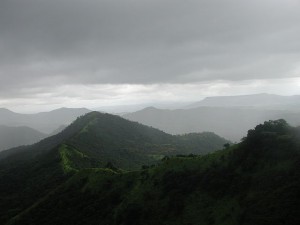I read an essay this weekend on a farmer and his wife in a tiny village in south India and how their lives and farming are affected by the rain there. It was a poetic description of how small farmers are intimately connected with the atmosphere and depend on it to provide the water they need to grow their crops and how changes in the frequency and timing of rain are affecting their ability to farm.
‘For nearly half of this couple’s lives, great troughs of water have fallen from the sky, and they know the rains as intimately as they know each other. They refer to 10 different “types” of rain, identified by their intensities and length, and can predict from the feel of the air and the time of the year which one is about to fall.
Everyone in Malenadu (which means “place of rain”) can.
“There is one kind that pours for four days and nights without a stop,” says Neelkumar, looking out at his fields of areca, turmeric and rice paddy. “Even if the world had turned upside down, we wouldn’t be able to tell because of these rains.” ‘
